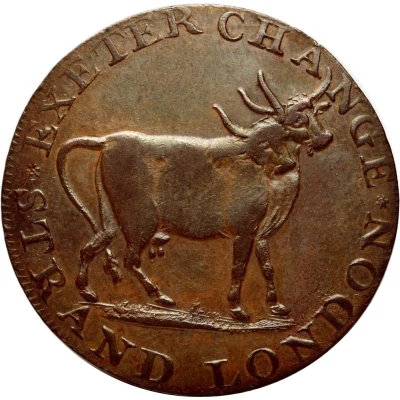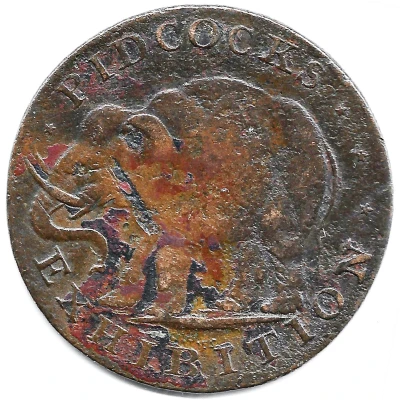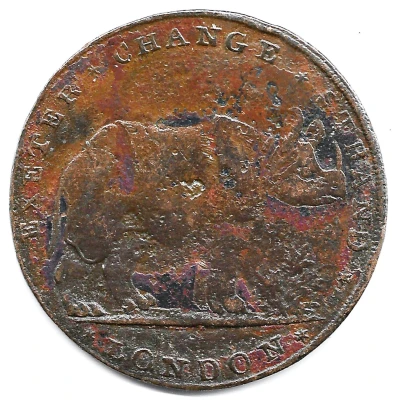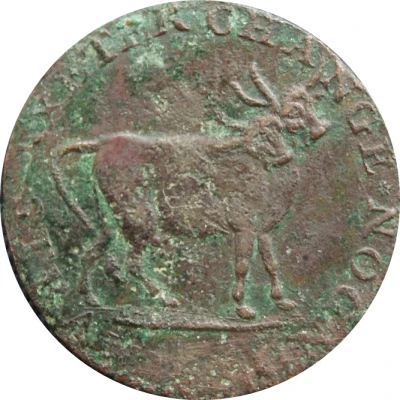


© ZacUK
½ Penny Middlesex - Pidcock's / Two-headed cow ND
| Copper | 7.12 g | 28.86 mm |
| Issuer | United Kingdom (United Kingdom, British Overseas Territories and Crown Dependencies) |
|---|---|
| Type | Token |
| Years | 1795-1800 |
| Value | ½ Penny (1⁄480) |
| Currency | Conder tokens (1787-1797) |
| Composition | Copper |
| Weight | 7.12 g |
| Diameter | 28.86 mm |
| Thickness | 1 mm |
| Shape | Round |
| Technique | Milled |
| Orientation | Coin alignment ↑↓ |
| Demonetized | 1797 |
| Updated | 2024-10-09 |
| Numista | N#109251 |
|---|---|
| Rarity index | 92% |
Reverse
A toucan standing left looking right on a branch in ground. Lettering around, toothed border
Script: Latin
Lettering: TO · THE · CURIOUS · OBSERVERS · OF · NATURAL · PHENOMENA ·
Engraver: Charles James
Edge
Plain
Comment
Token, copper, 28mm diameter. Issuer Gilbert Pidcock, about 1791. Pidcock was exhibiting the two-headed cow in January 1791 at the Lyceum, Strand in London. He also became the owner of premises at the Exeter Exchange where he exhibited his Royal Menagerie for several years. This token was one of a series produced by the Birmingham coin manufacturer William Lutwyche and designed by C. James of Bow Street, London during his second London period when he lived in Bow Street, Covent Garden, from 1795 to 1800.The Exeter Exchange - note the banner displaying exotic animals.
Interesting fact
One interesting fact about the Token ½ Penny (Middlesex - Pidcock's / Two-headed cow) ND (1795-1800) coin is that it features a unique design of a two-headed cow on one side, which was a rare and unusual image for coins during that time period.



